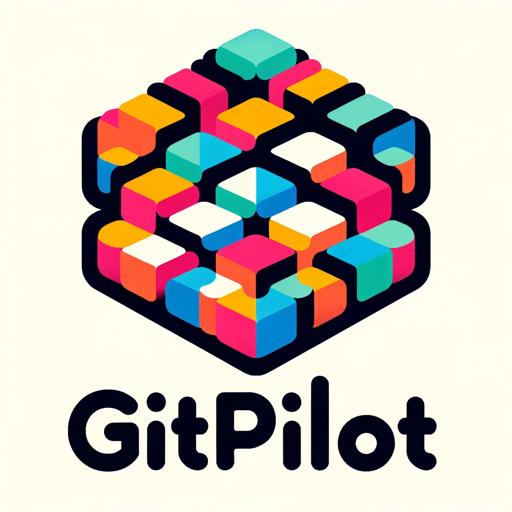Jira Ticket Helper-AI-powered Jira user story generator
AI-Powered Jira User Story Creator
Help to define a user story ticket based on the information provided
Related Tools

BugBountyGPT
AppSec & Bug Bounty

TickTick GPT
TODO list manager

GitPilot
Clear, brief GitHub aid, for you
Ticket Generator
Writing a JIRA ticket

G Tag Manager Assistant
(unofficial) Expert in Google Tag Manager, providing troubleshooting, advice, and structured support.

TYPO3 Dev Assist [by in2code]
★ Use FEATURES with PREFIX ★ GITHUB INTEGRATION (gh): "gh: search for code, documentation, repo, commit or issue" ★ EXTENDED BROWSING (web): "web: search query or direct link with search query" ★
20.0 / 5 (200 votes)
Introduction to Jira Ticket Helper
Jira Ticket Helper is designed to assist product owners, project managers, and development teams in crafting detailed, actionable user stories and tasks within the Jira environment. It focuses on translating minimal requirements into comprehensive user stories, ensuring clarity and ease of implementation. The helper is particularly valuable in scenarios where user stories need to align closely with broader project goals or when the requirements provided are vague and need further elaboration. For example, if a product owner provides a high-level requirement like 'Improve user login experience,' Jira Ticket Helper would help break this down into specific user stories with clear acceptance criteria, such as improving loading times, enhancing security, or streamlining the login interface.

Main Functions of Jira Ticket Helper
Detailed User Story Creation
Example
Transforming a broad requirement like 'enhance mobile app performance' into multiple, specific user stories focusing on different performance aspects such as load time, responsiveness, and error handling.
Scenario
In a scenario where a development team receives a generic task to 'improve the app,' Jira Ticket Helper assists in breaking down this task into user stories like 'As a user, I want the app to load in under 2 seconds so that I can quickly access content.' This ensures that the development team has a clear and measurable goal.
Acceptance Criteria Specification
Example
For a user story about implementing a search function, the helper would specify criteria such as 'The search should return results within 1 second,' 'Search results should be sorted by relevance,' and 'The search bar should be accessible on all major screens of the app.'
Scenario
When working on a new feature like a search function, the product owner might have specific expectations, but they may not be fully documented. Jira Ticket Helper ensures that these expectations are captured in the acceptance criteria, providing clear guidance to the developers and testers.
Linkages to Larger Project Goals
Example
Ensuring that user stories related to a new feature also tie back to overarching project objectives, such as improving user engagement or reducing churn.
Scenario
In a large project aimed at reducing user churn, Jira Ticket Helper would help connect smaller tasks like 'Implementing user feedback prompts' or 'Enhancing user onboarding' to the larger goal. This helps teams stay focused on the project's primary objectives and measure success accordingly.
Ideal Users of Jira Ticket Helper
Product Owners
Product owners benefit from Jira Ticket Helper by gaining the ability to articulate detailed user stories from high-level ideas or incomplete requirements. This is particularly useful when working in agile environments where requirements often evolve, and clear communication of user needs is crucial for successful development.
Project Managers
Project managers who need to ensure that tasks are clearly defined, linked to project goals, and manageable within the team's capacity find Jira Ticket Helper invaluable. It assists them in maintaining a clean backlog, ensuring that every task has clear acceptance criteria, and aligns with the overall project timeline.
Development Teams
Developers and QA teams benefit from the clarity provided by Jira Ticket Helper, which helps them understand the specific requirements and acceptance criteria for each task. This reduces ambiguity, minimizes back-and-forth clarifications, and ensures that the deliverables meet the expected standards.

How to Use Jira Ticket Helper
Visit aichatonline.org for a free trial without login, no need for ChatGPT Plus.
Start by visiting the site to access the Jira Ticket Helper tool. The free trial is available without requiring a login, ensuring a hassle-free experience.
Input your Jira project details.
Once you're on the site, enter the details of your Jira project or the specific tasks you need assistance with. This includes project descriptions, user roles, and any relevant constraints.
Use the templates provided to create detailed user stories.
Utilize the pre-configured templates to structure your user stories. Customize them to fit your project needs, focusing on clarity and comprehensive details.
Review and edit for completeness.
After generating the user stories, review them to ensure they meet all necessary criteria. Make any adjustments to the acceptance criteria or additional elements as required.
Export or integrate the stories into Jira.
Once finalized, you can export the stories into a format compatible with Jira or directly integrate them into your Jira project management tool.
Try other advanced and practical GPTs
Shopping Coupon Finder
AI-powered tool for real-time deals and discounts.

Finance (Business Finance)
AI-powered tool for business finance.

Finance
AI-powered financial insights and strategies

Brand Name & Domain Generator
AI-powered brand naming and domain search.
Website Instantly [Multipage]
AI-powered multipage website creator
![Website Instantly [Multipage]](https://files.oaiusercontent.com/file-9P4NhIxlr14rKlHEM41VVbxS?se=2124-03-21T08%3A51%3A45Z&sp=r&sv=2021-08-06&sr=b&rscc=max-age%3D1209600%2C%20immutable&rscd=attachment%3B%20filename%3Dsdfgasdfx.jpg&sig=8xHssdF2qgY0qpyaUNRn4My5tJwh9iYMn1Lg53H9Z1c%3D)
DOMAIN COMPOSER
AI-Powered Domain Insights and Valuation.

React Native TypeScript Expert
AI-powered React Native TypeScript guide.

React Native
Empower your app development with AI.

数据分析师
AI-Driven Insights for Smarter Decisions

图片生成器
Create images effortlessly with AI

中文代码助手
AI-driven assistance for code and language

中文GPT4.0
AI-powered tool for Chinese language mastery

- Project Planning
- Task Management
- Agile Development
- Requirement Gathering
- User Story Creation
Jira Ticket Helper: Frequently Asked Questions
What is Jira Ticket Helper?
Jira Ticket Helper is an AI-powered tool designed to streamline the process of creating detailed, comprehensive user stories and tasks for Jira projects. It helps translate minimal input into actionable, structured user stories.
Do I need a subscription to use Jira Ticket Helper?
No, you can access Jira Ticket Helper through a free trial at aichatonline.org without the need for a login or a ChatGPT Plus subscription.
Can I customize the user stories generated by Jira Ticket Helper?
Yes, the tool provides customizable templates that you can tailor to your specific project needs, including setting acceptance criteria, constraints, and linkages to larger project goals.
How does Jira Ticket Helper integrate with Jira?
Once your user stories are created and reviewed, you can export them into a format that is compatible with Jira or directly integrate them into your existing Jira project.
What are the main use cases for Jira Ticket Helper?
Jira Ticket Helper is ideal for creating structured user stories, managing complex project requirements, ensuring consistency in task descriptions, and facilitating clear communication among team members.